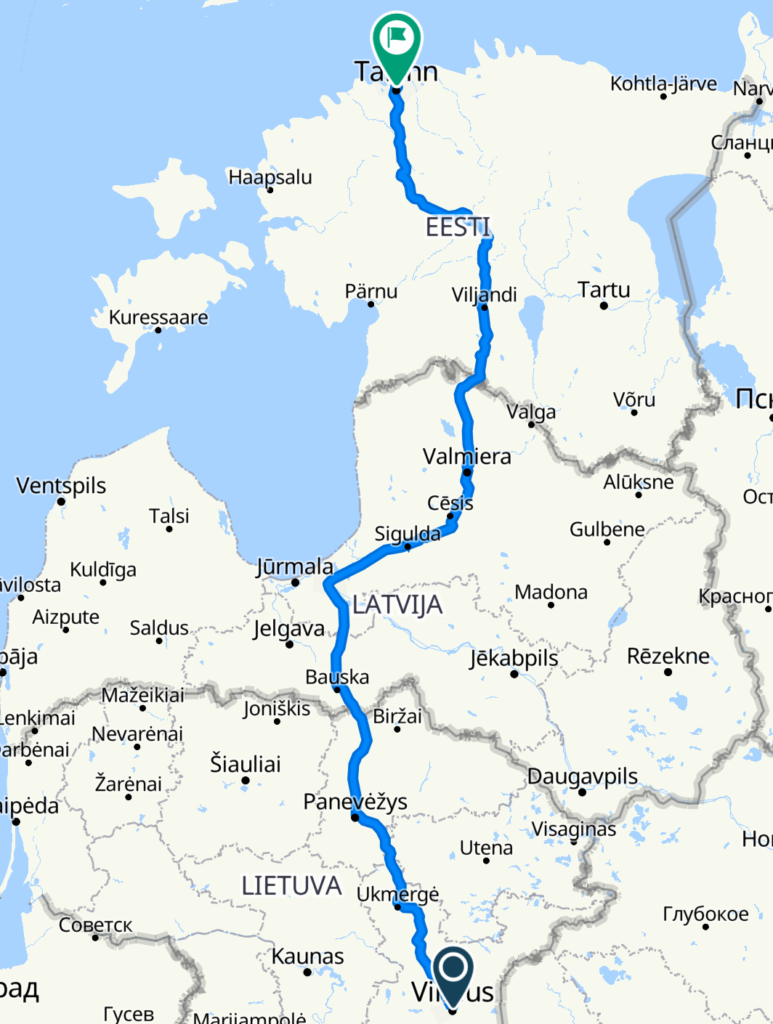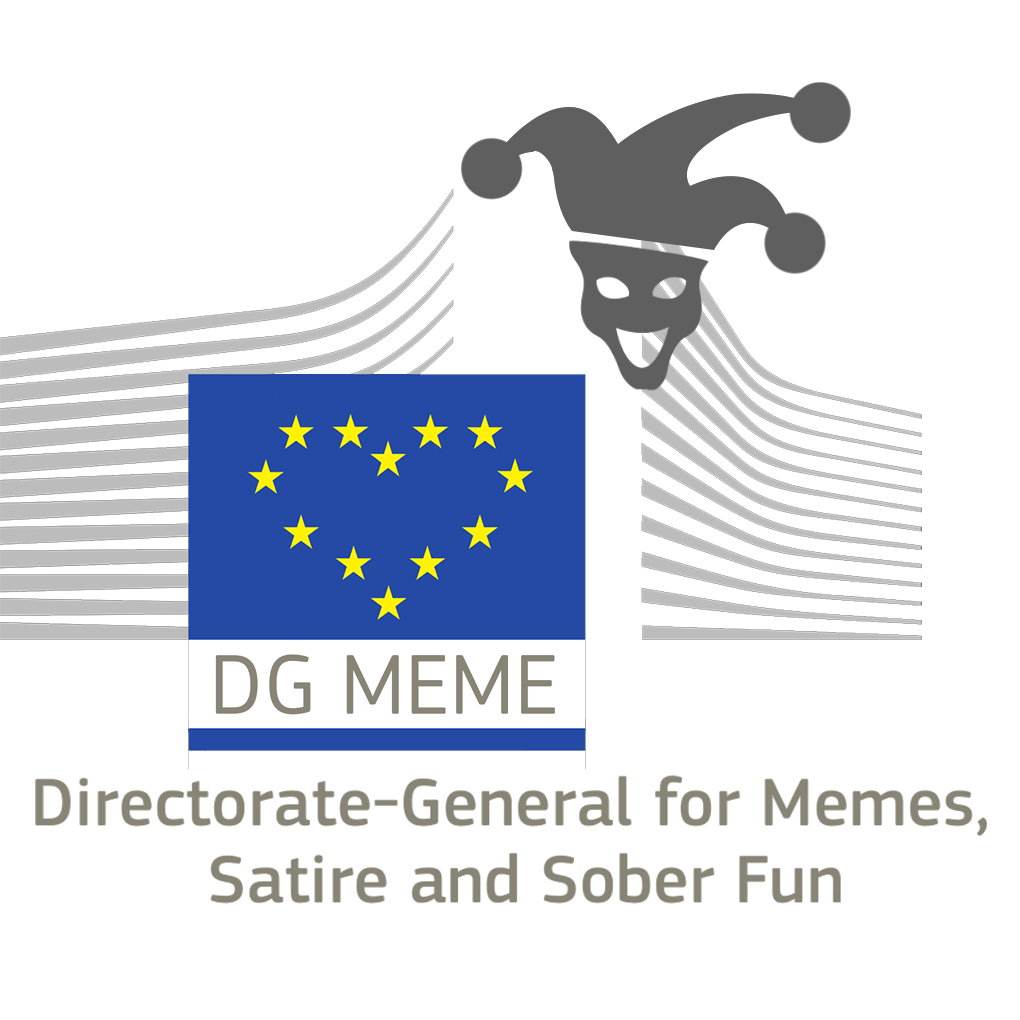Brave, daring and adventurous are not the first adjectives that come to mind when thinking about EU functionaries; the tabloid narrative wants them to be boring people, who work the bare minimum and just wait for an undeserved retirement. To fight this negative stereotype, DG MEME created a special unit called STARS (Spry Tattlers of Ancient and Radiant Stories), with the specific aim of collecting truly inspiring stories from our colleagues.
Today we have the great pleasure of interviewing Laimutė Pilukaitė, from the Commission’s Representation in Vilnius, Lithuania. Her calm glance and gentle manners conceal her past in the freedom movement that successfully fought for the independence of the Baltic States and her involvement in one of the most legendary (and peaceful) protests of all time.
The Baltic Way, a chain of two million people holding hands for 600kms, spanning through the three Baltic capitals. Who and how came up with this wonderful idea?
Three national movements – Rahvarinne (Estonia), Latvijas Tautas Fronte (Latvia) and Sąjūdis (Lithuania) – were established in 1988 and their leaders had been meeting often to coordinate activities, plan protest actions and exchange information. The idea to organise the Baltic Way came up in one of these meetings, just two months before the chosen date, the 23 August 1989, which is the anniversary of the Molotov-Ribbentrop Pact, that divided Eastern Europe between the Nazi Germany and Soviet Russia.
A pact that had been kept secret in the Soviet Union, as if it never existed, to support the perspective of the Soviet army “liberating” the nazi-occupied territories. A very symbolic choice.
Yes, it was a way to pay a tribute to those forgotten martyrs who were deported from the Baltic States to Stalin’s death camps, suffering all kind of torture and deprivation. Many lost their lives, very few managed to survive and come back home. At the same time, we had the chance to show to the world the existence of the three occupied countries and their determination to fight for freedom.
As used as we are to constitutional rights nowadays, it is hard to even imagine the risks that you were running in organizing such manifestation. What made you think the Baltic Way idea could have worked?
To be fair, at the beginning the idea looked a bit like a ‘mission impossible’ – a 600km long human chain… How many people did we need for it to work? How could we bring them safely along the road? Fortunately, we already had some experience with mobilizing people for peaceful demonstrations: just to name one, on 23 August 1988 we organized a manifestation with more than 100,000 people in Vingis Park, Vilnius.
In the end, as any good official knows, any task can be reduced to a few simple questions: what, how, where and by which means the event should be organized. What really mattered in the end was the very strong feeling that this was the right thing to do, an important thing to do. And that’s how the planning started.
How did you manage the logistics?
This might sound impossible to younger generations, but we had no internet, no email, no social media; not even a fax, the new technology back then, was available. The possibilities to print or copy printed materials were very limited, as almost everything was in the hands of the regime and under the surveillance of security . All we had were landline telephones, to contact people in different regions, and the post, to send the information around. Sąjūdis had its own printed medium Sąjūdžio žinios (“Sąjūdis news”), which had a national reach through local movement’s groups in regions. Sąjūdis also had one personal computer called Robotron and produced in Eastern Germany. I worked on it to produce various documents and even used it as a copy machine to have more copies.
Radio and television also played a huge role in broadcasting organisational information across the country. Even though no independent nor private media existed back then, most of the journalists quickly joined the movement. International media made their work across the world.
Can you describe a bit the situation in the months before the manifestation? What were young people worrying and protesting for? What were you hoping for?
1989 was a significant year for the history of Europe and the world. Radical changes in Lithuania were looming since 3 June 1988, when Sąjūdis was created. Before that, there were ecological discussion clubs, authorized under the soviet regime when perestroika started, to gather and share ideas.
Later we learned that KGB agents, the Soviet secret police, were participating in those meetings, and that they were also present when Sąjūdis was established. Many wondered why the movement was not immediately repressed; the most accepted answer is that the regime was not able anymore to process all the information that was gathered on the citizens. Also, the protest movement came from almost every part of the society, which made it very hard to control.
Yet KGB agents are probably not the most reasonable people to deal with…
We were aware of the risks: the resistance movements created in the forties and fifties were crashed by the Soviet Union. In the seventies and eighties, the Lithuanian Helsinki Group [a dissident organization that exposed the human rights violations of the regime, ed.] faced all the cruelty of the system: tortures, prisons, night raids to their homes, surveillance of their families. Sąjūdis in a way continued what they started. The expectations of the people that joined the movement was simple and yet hard to achieve: Freedom.
How was it to be involved in reaching such high goal?
It’s a life changing experience. I studied applied mathematics in a university and worked as software engineer. Reading newspapers and getting information on what is happening in the world was always my passion. We had the only arm in our hands – spreading information and communicating. I did not expect I would be contributing to the organization of an event that mobilized two million people and yet it came all very natural. I remember I was even writing the safety instructions for that day, how people should drive and behave and help each other.
Maybe it was a subconscious desire to work in policy-making. Can you tell us a specific memory from that day?
The first memory that comes to mind is flowers, tons of flowers! People were advised to bring flowers from their gardens. The flowers were uploaded to trucks and delivered to small aircraft, and they disbursed them all along the Baltic Way. And a woman in tears, looking at these flowers and saying: ‘I never expected I’ll be seeing this day’.
Besides that, I could never forget the emotions of that day, I could feel something exceptional was happening, something that can’t be repeated again. This feeling is always with me, as it is with many others that took part at the Baltic Way.

And how was it after the manifestation? Did you feel like you accomplished something?
I felt both relieved and at the same time empty. The main question of that evening was: what will happen next? There was still so much to do!
Lithuania gained independence on March 11th 1990, but we were still considered to be behind the Iron Curtain. That’s why, on August 23rd of the same year, we organized ‘The Way to Europe’, to move our reference point to the West. Not even in my wildest dreams I would have imagined that ten years later I’d be joining the European Commission, being involved in the information campaign for the accession referendum of Lithuania (2003).
Do you think the Baltic Way achieved its goals?
No doubts, it is impressive to see what the Baltic States achieved in three decades. In 2019, when we celebrated the 30th anniversary of the Baltic Way, I traveled from Gediminas Tower, Vilnius, to the border with Latvia. Along the way I met many young people, born after 1989, that were really curios about how life was back then. It is a great feeling to know I fought for an idea that positively impacted so many generations after mine.
Do you see any resemblance with what is happening in Belarus in these days?
I think that events in Belarus echo the spirit of the Baltic Way: peaceful people dressed in white with white flowers in their hands that demonstrate for their right to be free. It is appalling to see the violent repression of Lukashenko’s regime, right there in the middle of Europe. No country should be experiencing that anymore.
What happened to those who organised the Baltic Way? Did they manage to carry on the spirit of the manifestation or did they become administrators?
People’s destinies are very different, and that is normal in life. For example, Andrius Kubilius, the former Secretary General of Sąjūdis, became Prime Minister of Lithuania twice and now he is a MEPA Member of the European Parliament (abbr. MEP) is the living proof that eurocrats are elected by the people, as in every well-functioning democracy. They change every five years, which is more or less the time they need to get a basic idea of how the European Union works. They....
I don’t think it really matters what we did after that: we will always be ‘brothers in arms’, because of the common memories that unite us. And I’m happy that the Baltic Way still receives so much attention worldwide.





